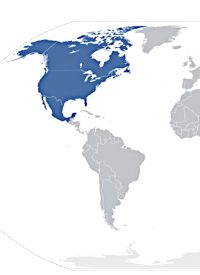
On December 9 Canada’s National Post reported that its government is working on a security and trade deal with the U.S. that would “create a perimeter around North America and allow people and goods to flow more freely across the border.”
Hailed as the “New Border Vision,” the treaty would include “new common-consumer-product regulations, a pre-clearance agreement for goods crossing the border to expedite waiting times, and the use of advanced technology to access biometric data for travelers at airports and land crossings,” reported the Post.
“The United States announced a similar deal with Mexico in March,” continued the report, a deal that included “moves to expedite travel and commerce such as secure transit lanes for pre-cleared rail and truck shipments, as well as passenger pre-clearance for individuals.”
According to the article, similar attempts at such an agreement have foundered in the past, most notably “the Security and Prosperity Partnership (SPP) agreement signed in 2005 by then prime minister Paul Martin, then U.S. president George W. Bush and then Mexican president Vicente Fox.”
However, a major investigative report by The New American magazine in 2007 demonstrates that this latest understated move is merely a continuation of the SPP process, and represents nothing less than a grand design to subvert the U.S. (along with Canada and Mexico) into a North American Union (NAU) mirroring the European Union (EU) governing that continent.
Colin Robertson, a senior research fellow with the Canadian Defence and Foreign Affairs Institute, argued that the latest agreement is nothing more than an attempt to free the flow of goods between his country and the U.S., as well as to improve security between the two countries, and that the effort was unlikely to lead to a “European Union-style” political and economic structure. “Economic union would mean a common currency and, over the last couple of years, it has been definitively proven that we are far better off with our own currency,” said Robertson.
While a common currency has certainly been one of the sticking points to a fully unified Europe, such an obstacle will not hinder the efforts of a cabal of determined internationalists working to “unify” North America. In fact, one of Robertson’s fellow citizens, Canadian economics professor Herbert G. Grubel, has stumped passionately for a single North American currency he calls the “Amero,” a proposal that American political scientist Robert Pastor (CFR) endorsed in his 2001 book Toward a North American Community, saying such a common currency is “in the best interests of all three countries.”
Evidence compiled in The New American’s NAU “Merger in the Making” issue demonstrates that, with or without a common currency, a “European Union-style” political and economic structure is exactly what is in the works for the U.S. and its neighbors to the north and south. The process began with the implementation in 1993 of the North American Free Trade Agreement (NAFTA), a mechanism that veteran internationalist Henry Kissinger referred to as part of the “architecture of a new international system.”
In fact, when President Clinton signed the U.S. on to NAFTA, he explained that one of the objectives of the agreement was to “establish a framework for further trilateral, regional, and multilateral cooperation” between the three nations.
True to warnings from such organizations as The John Birch Society that NAFTA was merely the first step toward integrating the U.S. into a regional North American governmental structure similar to the EU, in March 2005 an “Independent Task Force” of the Council on Foreign Relations (CFR) proposed the creation, by 2010, “of a community to enhance security, prosperity, and opportunity for all North Americans….” The CFR task force explained that the borders of this new mechanism “would be defined by a common external tariff and an outer security perimeter”—which sounds eerily like the definition of a common national border.
Nine days later, President George Bush joined Mexico’s President Vicente Fox and Canada’s Prime Minister Paul Martin to launch the Security and Prosperity Partnership of North America (SPP), which, in a joint statement, the trio declared would “help consolidate our action into a North American framework to confront security and economic challenges.”
Mr. Bush went on to say that the overall vision of the SPP entailed a “commitment to markets and democracy, transparency, rule of law”— rhetoric that clearly points to a commitment to a regional NAU-style government.
Two months later, in May 2005, the CFR’s Independent Task Force on North America re-stated its proposal for the establishment, by 2010, of “a North American economic and security community, the boundaries of which would be defined by a common external tariff and an outer security perimeter” — the very perimeter with which, the National Post reported, Canada and the U.S. are quietly, almost secretly, moving ahead.
As John F. McManus, President of The John Birch Society, said in 2007, “The Security and Prosperity Partnership is setting the stage for uniting the three nations of North America into a North American Union that will parallel for the West what the EU has done to Europe.”
Regardless of efforts by internationalist architects to spin it as in the best interest of all concerned, the SPP/NAU model stands in opposition to the unequaled system of ordered liberty upon which the United States of America was founded. The American Policy Center’s Tom DeWeese, who with Mr. McManus helped to found the Coalition to Block the North American Union, warned, “If you believe the United States is the most unique nation on earth, with a government designed to protect your natural liberties, an economic system unlike any other, and a judicial system unknown to any other nation, then a North American Union is a threat to all you hold dear.”



